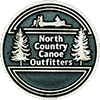Canoe Camping in the Boundary Waters Canoe Area (BWCA) and Quetico Provincial Park
Minnesota canoe camping is universally defined as the Boundary Waters Canoe Area Wilderness. The BWCA has over one million acres of canoeing wilderness. One thousand pristine lakes are connected by over 1500 miles of canoe camping routes. Declared by many as the most beautiful canoeing wilderness they have ever seen, National Geographic named it one of “50 Destinations of a Lifetime” their list of the world’s “must-see” destinations. This is a canoe camping vacation you do not want to miss. Minnesota’s Boundary Waters is a true canoe camping wilderness experience: no electricity, no telephone lines, no roads, no docks, no cabins, no motorboats. You can travel for days and see fewer people than you would in one of your local restaurants. There’s just nowhere else like it in the world. Simply, it’s a northern Minnesota canoeing paddler’s dream come true.
If you’re seeking a Northern Minnesota canoeing and camping trip the BWCA can meet all of your expectations. From paddling the lakes bordered by towering cliffs, to portaging around numerous rocky rapids and waterfalls, or simply experiencing the beauty of a remote canoeing and camping wilderness.

Minnesota Canoeing in the Boundary Waters
Canoeing in the BWCAW presents its own challenges. You can choose from suggested overnight or multiday routes or blaze your own trail to points unknown. While the BWCAW is full of interconnected waterways, frequent portaging of your canoe and gear along wilderness trails is often required. Entering the wilderness at Mudro Lake will put you on a route where you will encounter Basswood, Curtain and Rebecca Falls on your way to Crooked Lake. You can find remote campsites on numerous lakes that provide excellent fishing. Portages of a few feet up to three-quarters of a mile, may be required.

Minnesota Canoe Camping in the Boundary Waters
No one lives in the Boundary Waters. Lakeshore clearings, islands, and streamside rock outcropping are your nightly camping spots. Over 2,300 Forest Service campsites dot the wilderness. You may gather wood for campfires. Travel to a different campsite each day or set up base camp and explore on day trips to adjoining lakes.
Situated within Superior National Forest in northeastern Minnesota, the Boundary Waters Canoe Area Wilderness (BWCAW) is a vast preserve of lakes and woods that stretches for about 100 miles along the U.S. border with Canada. The Canadian side of this canoe wilderness is Quetico Provincial Park. The Boundary Waters area offers a wilderness experience unlike any other.
All sites are planned for one canoeing camping party only, so only your group will share your pristine camp in the woods. Often, there’s a big slab of rock at the edge of the shore, perfect for an evening of stargazing.

Your Minnesota Wilderness Camping and Canoeing Journey
North Country will help you create your own adventure in the Boundary Waters Canoe Area. Some of our paddlers establish a base camp, and take day trips from there, limiting the amount of gear they carry over portages. Others enjoy taking a “loop” trip, moving from lake to lake. Choosing canoe routes with longer or more challenging portages can get you into more remote areas.
North Country Canoe Outfitters will help you plan a trip based on your ability, trip preferences, and the length of time you have for your trip. We will supply all of the canoeing and camping gear you need. For your canoe camping trip, we will have prepared detailed maps with the locations of campsites and portages well annotated.
Minnesota’s Canoe Camping Season
The canoeing and camping season runs from mid-May through mid-September. There is normally great fishing in May and June. Wildflowers appear in June and wild blueberries ripen in July. Late July through mid-August is the most popular time for canoe camping. There are fewer bugs after late July. With fewer people taking canoe trips in September, it’s one of the very best months for a canoe trip.
Minnesota’s Canoeing Wilderness
“Abundant wildlife” is by no means an exaggeration. Moose, deer, pine martens, beavers, and otters are the most frequently seen animals, while black bears, porcupines, red and silver foxes, lynx, bobcat, fishers, weasels and mink are more reclusive. An exceptionally privileged visitor might be treated to an evening serenade by a pack of timber wolves – the largest population in the lower 48 states resides in northeastern Minnesota’s canoeing and camping wilderness.
